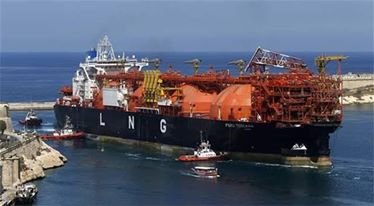ISLAMABAD: Liquified Natural Gas (LNG), being the only cheapest and instant remedy, is the essential part of energy-mix needs of world’s emerging economies, official sources in Ministry of Petroleum and Natural Resources said Friday.
“World is turning towards LNG Global and emerging economies such as China, Korea, Japan, India, Thailand, Indonesia, European Union and Brazil to ensure LNG remains part of its energy-mix requirements,” they told APP.
They said Japan was importing 80 million tonnes of LNG every year (MTPA) and India 15 MTPA due to the commodity’s cheap price and efficiency as compared to other fuel.
The Pakistan Muslim League-Nawaz (PML-N) government, the sources said, took a bold and practicable step, which the previous governments could not take, to import LNG for meeting the energy needs of power generation and industrial sectors.
Pakistan, they said, signed a 15-year agreement with Qatar to import up to 3.75 million tonnes of LNG a year, which was being highly appreciated by business community.
Economic experts and entrepreneurs including President Federation of Pakistan Chamber of Commerce and Industry Abdul Rauf Alam, Chairman Pakistan Industrial and Traders Association Irfan Iqbal Sheikh and Chairman All Pakistan Compressed Natural Gas Association Ghiyas Abdullah Paracha have appreciated the government for signing the historic deal.
The country’s total gas production is around 4 bcfd (billion cubic feet per day) against the demand of 6 bcfd, which shows approximately two bcfd gap between demand and supply of the
commodity.
The deal, Pakistan’s biggest, will help the country add about 2,000 Megawatts of gas-fired power-generating capacity and improve production from fertilizer plants now hobbled by
the lack of gas.
“It is the hallmark of PML-N government that it made possible import of LNG for the first time,” they said and added that Japan, South Korea, China, India, Taiwan, Spain, United Kingdom, Mexico,
Turkey and France were among the major LNG importing countries. The sources described that the settled LNG price was 13.37 percent of the brent and cheaper than the gas to be imported through Iran-Pakistan, Turkmenistan-Afghanistan-Pakistan-India (TAPI) gas pipeline projects and Pakistan indigenous gas.
“Even the India’s LNG contract is expensive by 30-35 percent than Pakistan’s deal with Qatar,” he said.
“The landmark deal will save the country’s Rs.100 billion per annum and help meet its energy needs by 25 percent,” they said.
They said LNG-based power production would cost $ 9.5 cents per kilowatt hour (kWh) as compared to energy produced through diesel, which costs approximately $ 18 cents per kilowatt hour.
According the ministry, the procurement price from Qatar is the lowest as compared to the prices it offered at various points in the past.
The LNG price for the Mashal Project was $6.94 per mmbtu, Integrated Project $6.01 per mmbtu, while Qatar’s initial offer was$6.56 per mmbtu, which was brought down after negotiations and estimated cost for the month of March is $4.78 per mmbtu.
The LNG would also be cheaper as compared to IP and TAPI pipeline projects. The IP and TAPI border rates are $5.70 and $5.90 per mmbtu respectively, while Qatar’s current rate is $5.35 per mmbtu.
Justifying the LNG import deal, they said “In Pakistan, natural gas accounts for 35 percent of all power generation, 23.8 percent of industrial use, 15.6 percent of fertilizer, 5.4 percent of CNG and 18.1 percent of household uses.Its current gas shortfall is of two billion cubic feet per day (BCFD) or 33 percent of the total gas demand.
Besides, the sources said, Pakistan’s indigenous gas supply was expected to deplete to 1,500 MMSCFD in 2030 (from 4,000 MMSCFD today) and “the demand-supply gap is expected to reach 7,000 MMSCFD in the next 15 years as its existing gas reserves are fast depleting.”





